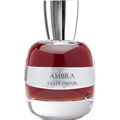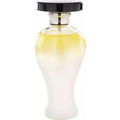
Floyd
572 Reviews
Translated · Show original

Floyd
Top Review
28
From the Tectonic Quality of Ambered Resins
I met Thierry Autour, whom some (like himself) describe as a scientist, while others see more of a madman, in a national park in North America at a location that is difficult to access for civilization, the whereabouts of which I promised to keep secret. The texture and temperature of the soil here are ideal for his olfactory experiments, he assured me. Some time ago, he had buried various resins from North and South America, Egypt, and Thailand to examine their, as he said, tectonic qualities. Due to the anomaly of the soil, the resins would never harden and would remain in constant motion, sometimes even merging and separating like in a lava lamp, he described enthusiastically. However, the olfactory experience when uncovering the resins is unique, as the aromas would gradually dissipate after a while, so it is an honor for me, and I should close my eyes, he smiled mischievously as he knelt on the damp ground with a small shovel and a root brush and began to make the first careful digs into the soil. I closed my eyes.
At first, I perceived a warm-spicy earthy scent of patchouli, which seemed to mix with a slightly sharp-green vetiver. Both scents blended quite pleasantly, seeming to excitingly complement each other in their contrast. That is just the smell of the earth and the grass here, Thierry laughed, and I heard him scraping further.
About five minutes later, a slightly smoky, resinous, minimally cinnamon-vanilla aroma took over, which vaguely reminded me of gingerbread, and Thierry assured me that this was the South American Peru and Tolubalsam resins that evoked these notes and liked to merge with each other during their tectonic movement to enhance their aromas.
After another ten minutes, the scent lightened a bit, acquiring a slightly medicinal resinous character, which Thierry attributed to the benzoin resin, now mixing with the smell of the damp meadow. To me, it still smelled of fresh vetiver. This impression now shifted with a distant cumin-like scent that mingled with the cinnamon-vanilla resin and seemed to be glazed with warm honey. This was now the labdanum resin, which elicited this impression from the Peru and Tolubalsam, Thierry indulged, before he gave me a one-hour geological lecture on the peculiarities of resin tectonics, to which I paid no attention due to the spicy-warm enjoyment, into which the scent of balsamic-tobacco-like amber was slowly blending more and more. This amber scent arose from the separation of cis-abienol from the North American balsam fir, Thierry lectured, and came to me with chemical soil processes that I could not follow for the life of me; I focused instead on the increasingly sweet, warm-spicy amber scent that lingered for many hours before slowly fading away.
I could now open my eyes again, Thierry said, trying to be serious, to which I did just that. Laughing to tears, he held out a bottle of Ambre Mystère to me. These perfume junkies believed even the most absurd theories as long as it was about discovering new olfactory compositions, he chuckled, resin tectonics and aroma archaeology, he could hardly contain himself. I could keep the bottle, he finally said, recommending the scent for autumn to spring and noting that the sillage was rather moderate, which I had already noticed myself.
At first, I perceived a warm-spicy earthy scent of patchouli, which seemed to mix with a slightly sharp-green vetiver. Both scents blended quite pleasantly, seeming to excitingly complement each other in their contrast. That is just the smell of the earth and the grass here, Thierry laughed, and I heard him scraping further.
About five minutes later, a slightly smoky, resinous, minimally cinnamon-vanilla aroma took over, which vaguely reminded me of gingerbread, and Thierry assured me that this was the South American Peru and Tolubalsam resins that evoked these notes and liked to merge with each other during their tectonic movement to enhance their aromas.
After another ten minutes, the scent lightened a bit, acquiring a slightly medicinal resinous character, which Thierry attributed to the benzoin resin, now mixing with the smell of the damp meadow. To me, it still smelled of fresh vetiver. This impression now shifted with a distant cumin-like scent that mingled with the cinnamon-vanilla resin and seemed to be glazed with warm honey. This was now the labdanum resin, which elicited this impression from the Peru and Tolubalsam, Thierry indulged, before he gave me a one-hour geological lecture on the peculiarities of resin tectonics, to which I paid no attention due to the spicy-warm enjoyment, into which the scent of balsamic-tobacco-like amber was slowly blending more and more. This amber scent arose from the separation of cis-abienol from the North American balsam fir, Thierry lectured, and came to me with chemical soil processes that I could not follow for the life of me; I focused instead on the increasingly sweet, warm-spicy amber scent that lingered for many hours before slowly fading away.
I could now open my eyes again, Thierry said, trying to be serious, to which I did just that. Laughing to tears, he held out a bottle of Ambre Mystère to me. These perfume junkies believed even the most absurd theories as long as it was about discovering new olfactory compositions, he chuckled, resin tectonics and aroma archaeology, he could hardly contain himself. I could keep the bottle, he finally said, recommending the scent for autumn to spring and noting that the sillage was rather moderate, which I had already noticed myself.
10 Comments




 Ambergris
Ambergris Benzoin
Benzoin Vanilla
Vanilla Labdanum
Labdanum Peru balsam
Peru balsam Tolu balm
Tolu balm Patchouli
Patchouli Vetiver
Vetiver




 Yatagan
Yatagan Luwa
Luwa Theris
Theris Licorice
Licorice Gold
Gold Ergoproxy
Ergoproxy Renata
Renata Gaukeleya
Gaukeleya Serenissima
Serenissima FrauKirsche
FrauKirsche






















